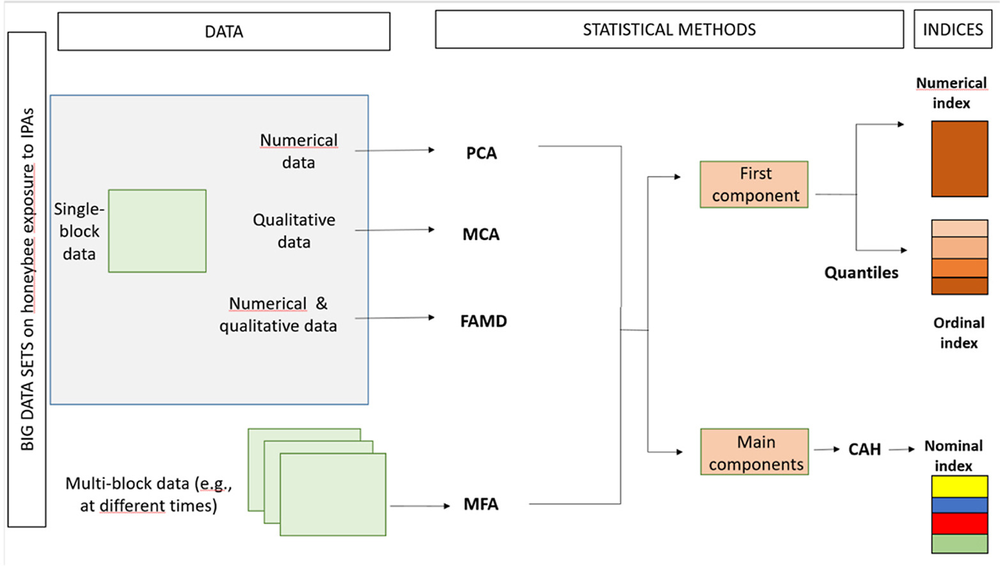pan-european assessment, monitoring, and mitigation of stressors on the health of bees
New paper presents composite indices to characterise honey bee exposure to IPAs
Pollinators play a vital role in maintaining biodiversity and agricultural production worldwide, but they are susceptible to various infectious and parasitic agents (IPAs). To better assess the exposure of honey bees to IPAs, researchers have developed discriminative and quantitative molecular methods. These methods produce large datasets that need to be summarised for interpretation.

Graphical abstract of the paper.
A new PoshBee paper describes the calculation of three types of composite indices (numerical, ordinal, nominal), which can be used to characterise honey bee exposure to IPAs in 128 European sites. These indices summarised the information of eight IPAs quantified at two time points into synthetic values, providing different yet complementary information. They can thus be utilised according to users’ specific objectives.
The described indices can also be applied to datasets on the risk posed to honey bees by other stressors. They could also be used by policymakers to characterise a given sanitary situation at a site level.
Read the full paper here.